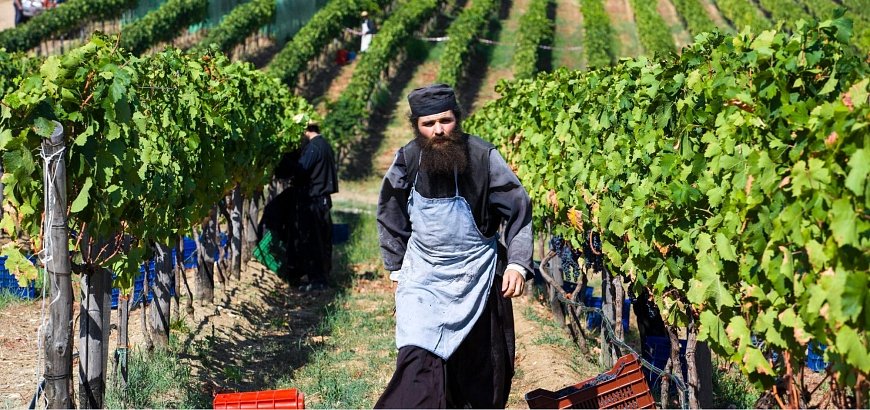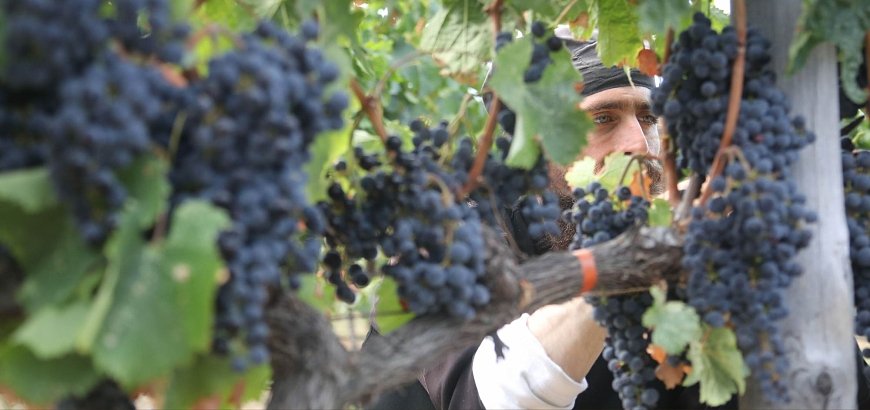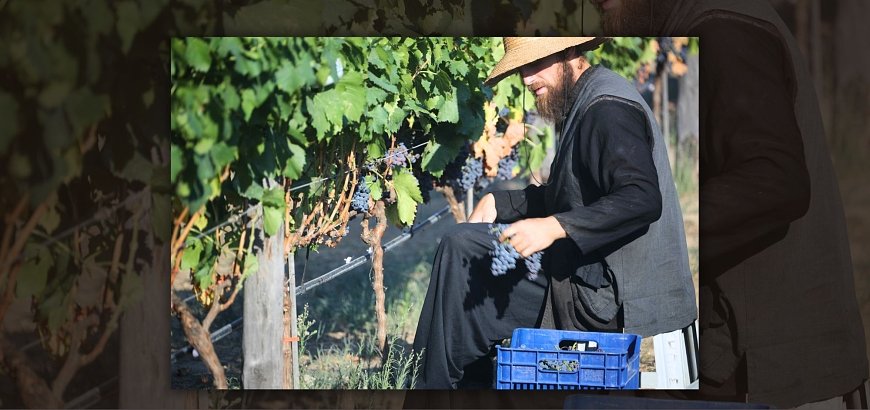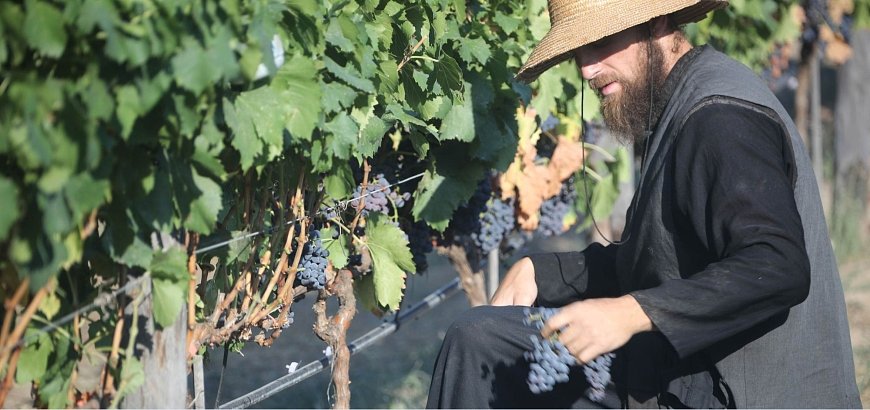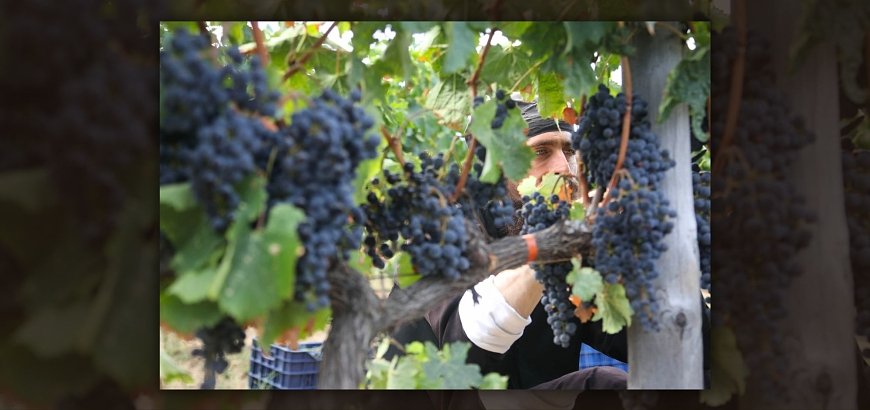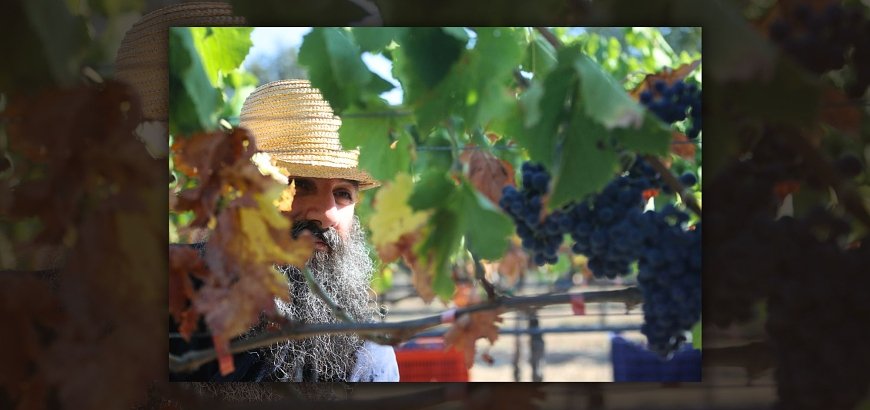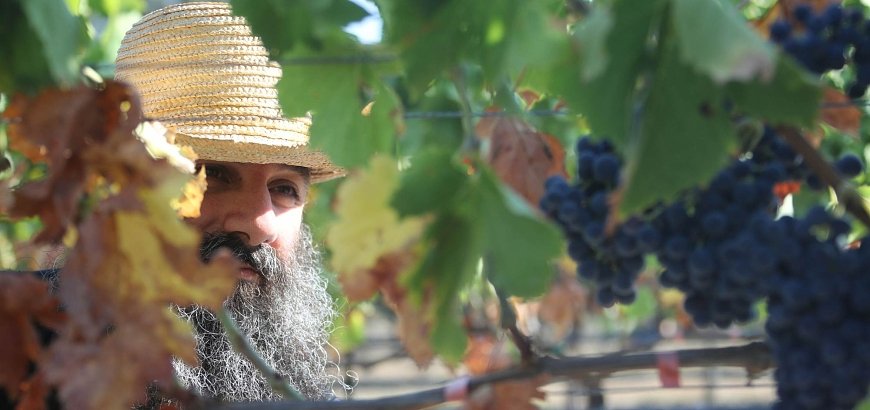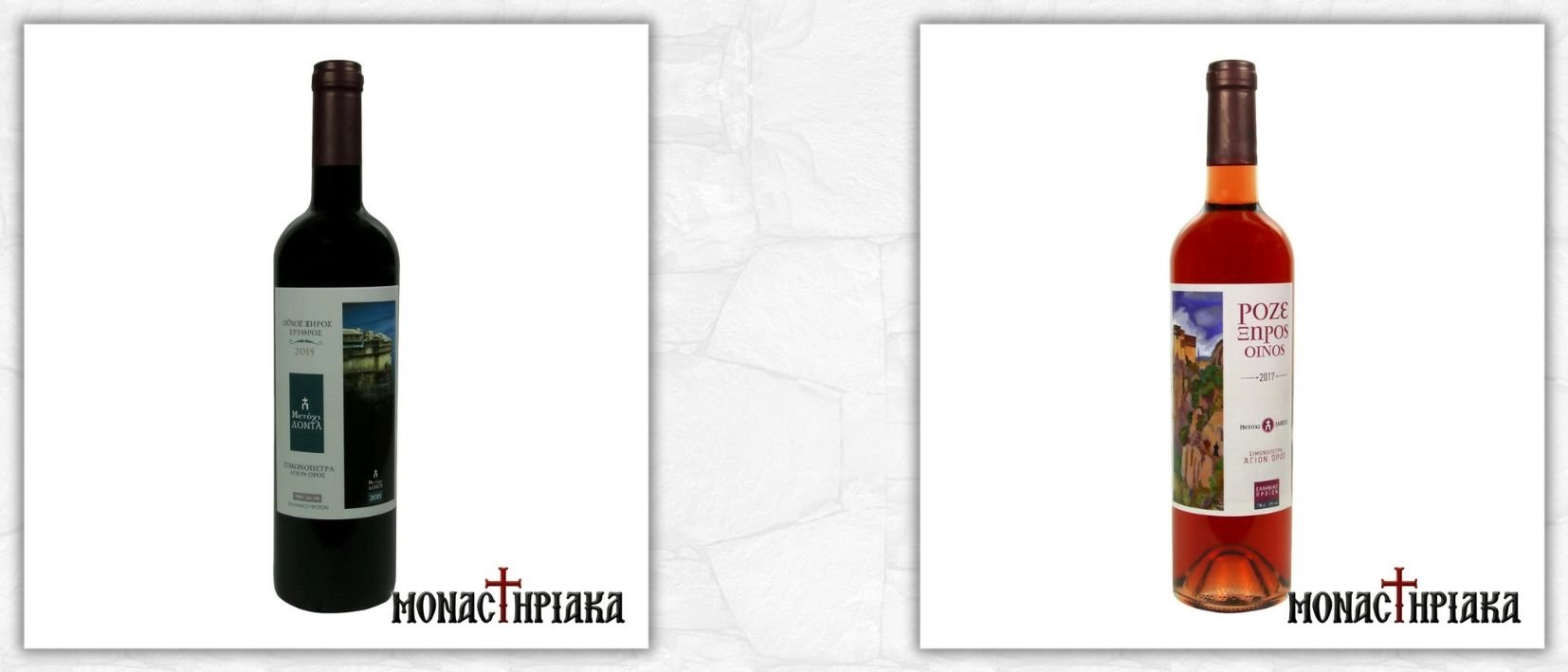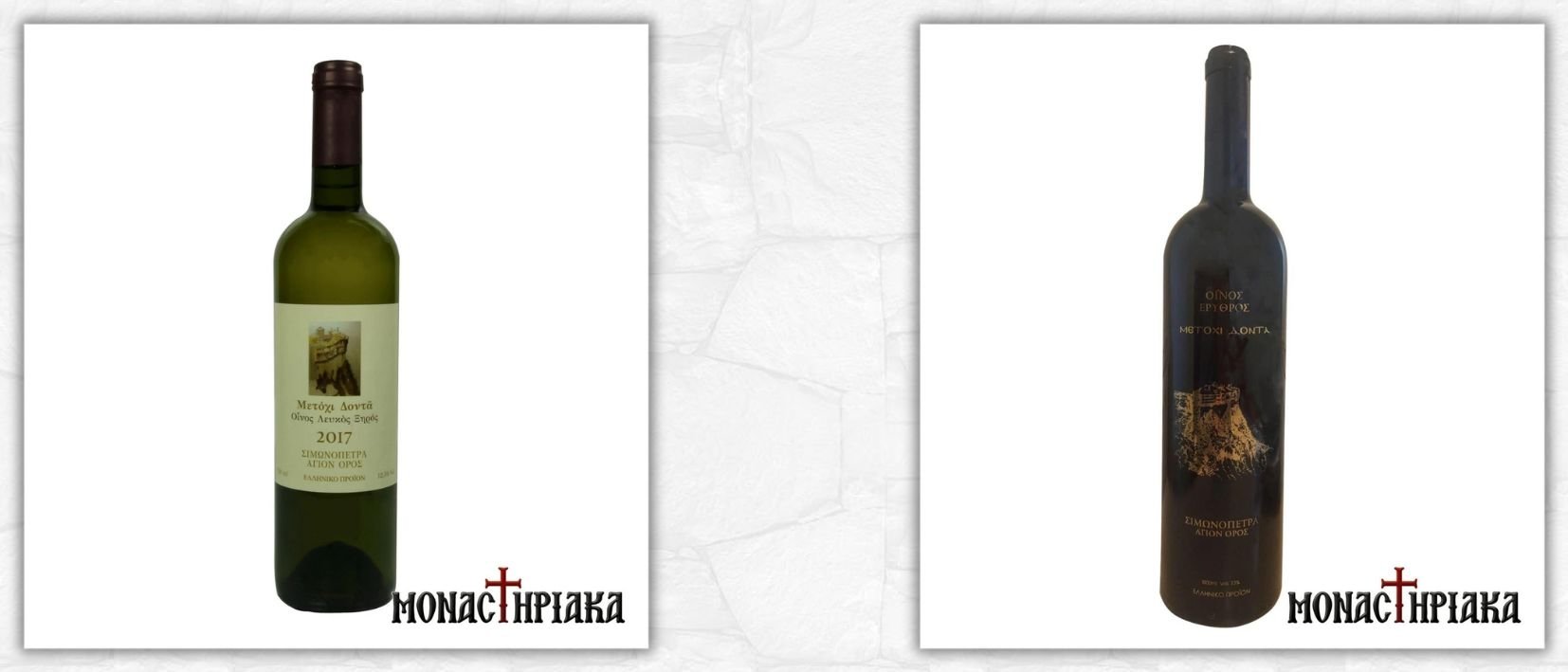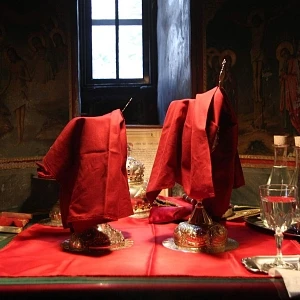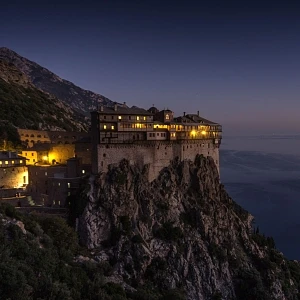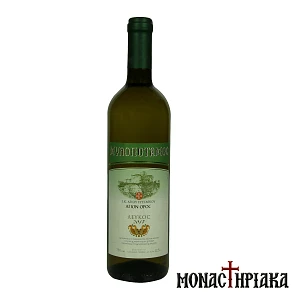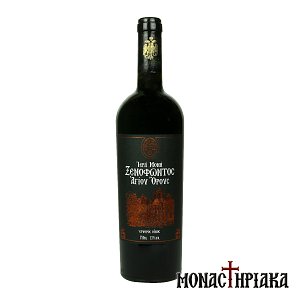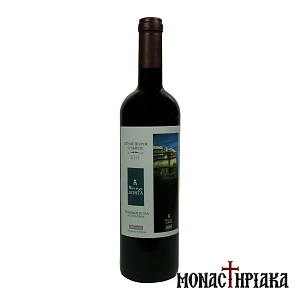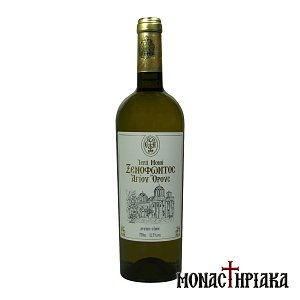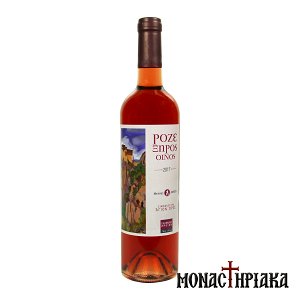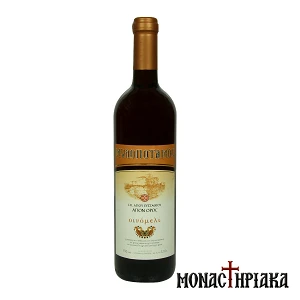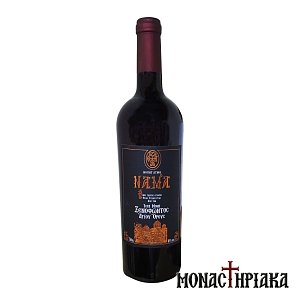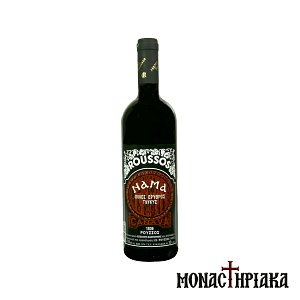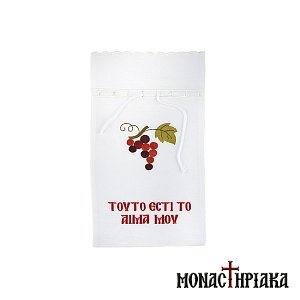The appearance of wine in the Garden of Virgin Mary
Wine, as a blessed commodity, plays a predominant role in the life of the Athonite monasteries. The founder of the monastic state of Mount Athos, Saint Athanasius the Athonite, decreed that each monastery should have its own vineyards.
Thus, since the 10th century, the founders of the monasteries, recognizing the value of wine, have numerous vineyards in their monastic properties.
On Mount Athos, there were no large areas for grain, due to the geographical difficulty and the wildness of the place. However, the microclimate of Mount Athos as well as its special vineyards, are key factors for a distinct wine production, unique throughout the Balkan Peninsula and the Northern Aegean.
Even today, a number of monks from each monastery are in charge of the cultivation of vineyards and the production of wine.
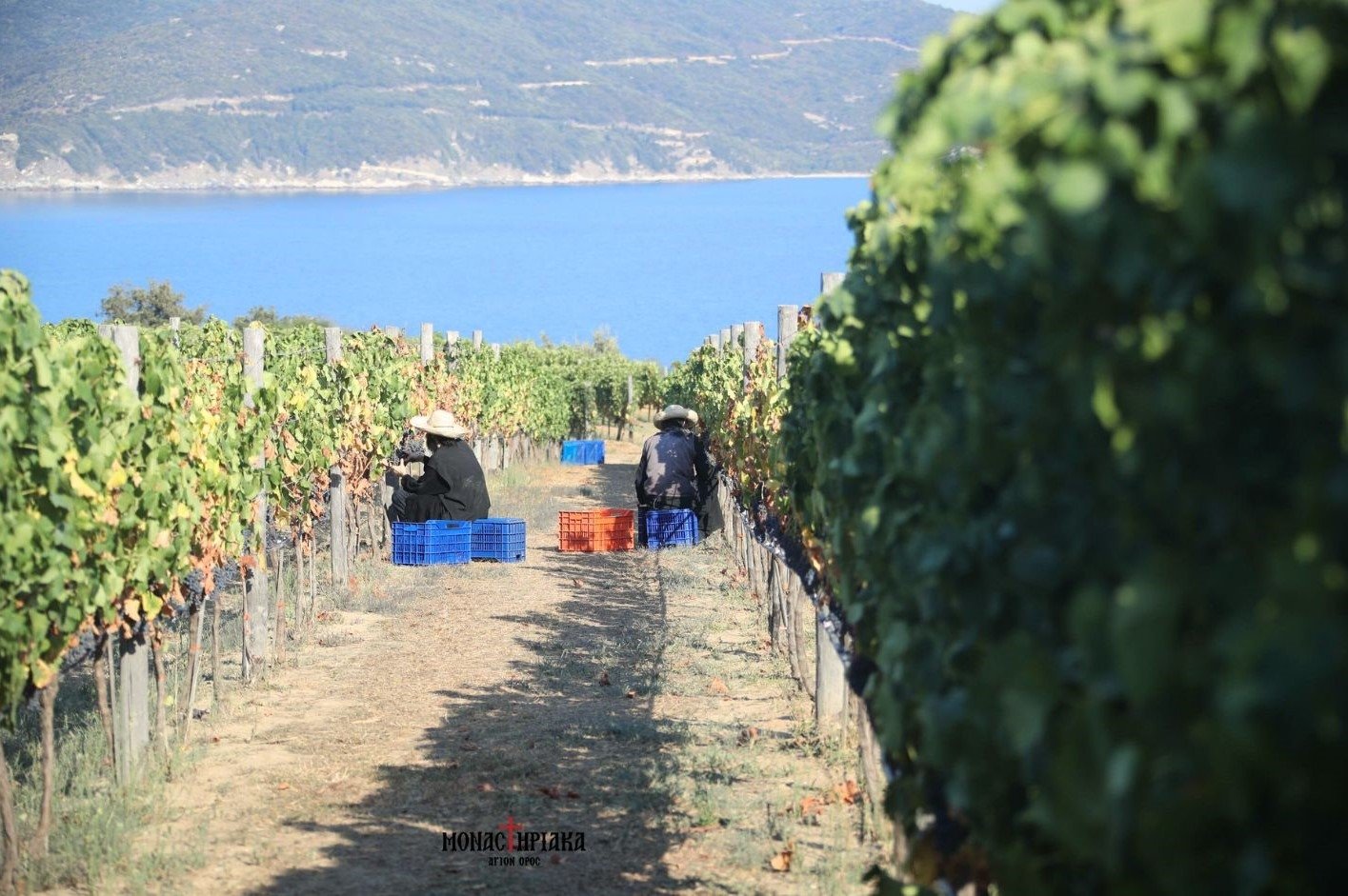
The diet of monks may be austere, but their two daily meals are accompanied by wine, except for the fasting days.
The offering of wine is also indispensable during the visits of thousands of pilgrims to Mount Athos. The visitors' two daily meals are accompanied by wine or raki (i.e. raki is an alcoholic beverage produced from the fermentation of fruits or grapevines or honey, in the Balkan Peninsula).
Athonite wine, besides covering the nutritional needs of the monks and offering to the visitors, is used as a product for sale, both inside and outside of the monastery walls.
The wines of Mount Athos are renowned, both in Greece and abroad, allowing the monasteries to defray their expenses.
The secret behind the wine production on Mount Athos
The organized vine cultivation in the monasteries of Mount Athos has been practicing continuously for over 10 centuries with excess care and devotion from the fathers.
When a pilgrim asked what the secret was behind the wonderful wine he had drunk, the Athonite monk replied, "I put in a few Salutations to the Mother of God and a little Vigil."
This may be the "secret" behind the uninterrupted ten-century history of Athonite wines...
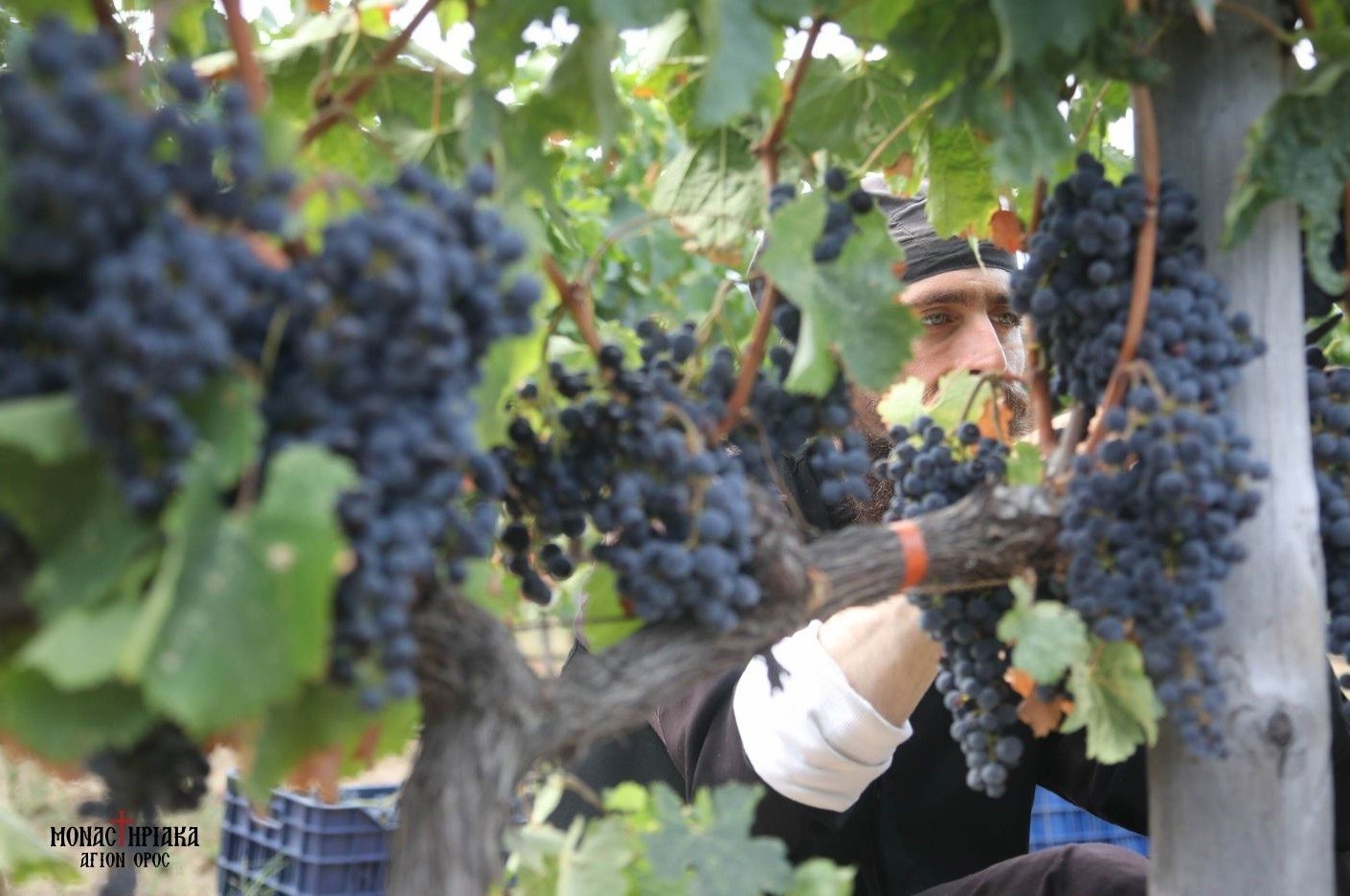
The timeless production of wine in the Holy Monasteries of Mount Athos
In the monastic republic of Mount Athos, each monastery produces its own wines from its enriched vineyards, uninterruptedly for centuries.
Holy Monastery of Simonos Petra
The Holy Monastery of Simonopetra took its name from its founder, Saint Simon the Myrrh-scented.
It is said that initially the builders refused to build the Monastery because of the difficult geographical location that had been chosen. They accepted only when they were faced with a miracle that happened in that difficult place. In particular, the subordinate of Saint Simon fell from the 300 meter high rock, as he offered wine to the builders. Then he reappeared before them unharmed with the jug full of wine. Until today, visitors can see the wall painting of that miracle inside the monastery.

During the period 1365-1371 AD, the Serbian ruler John Ouglesis, a benefactor of the monastery of Saint Simon, bought a piece of land named Dontas from the Monastery of Xeropotamou and donated it to the Monastery of Simonopetra.
Dontas estate has extensive vineyards, where more than 15 acres of Merlot, Cabernet Franc, Assyrtiko, Limnio and edible grapes are cultivated.
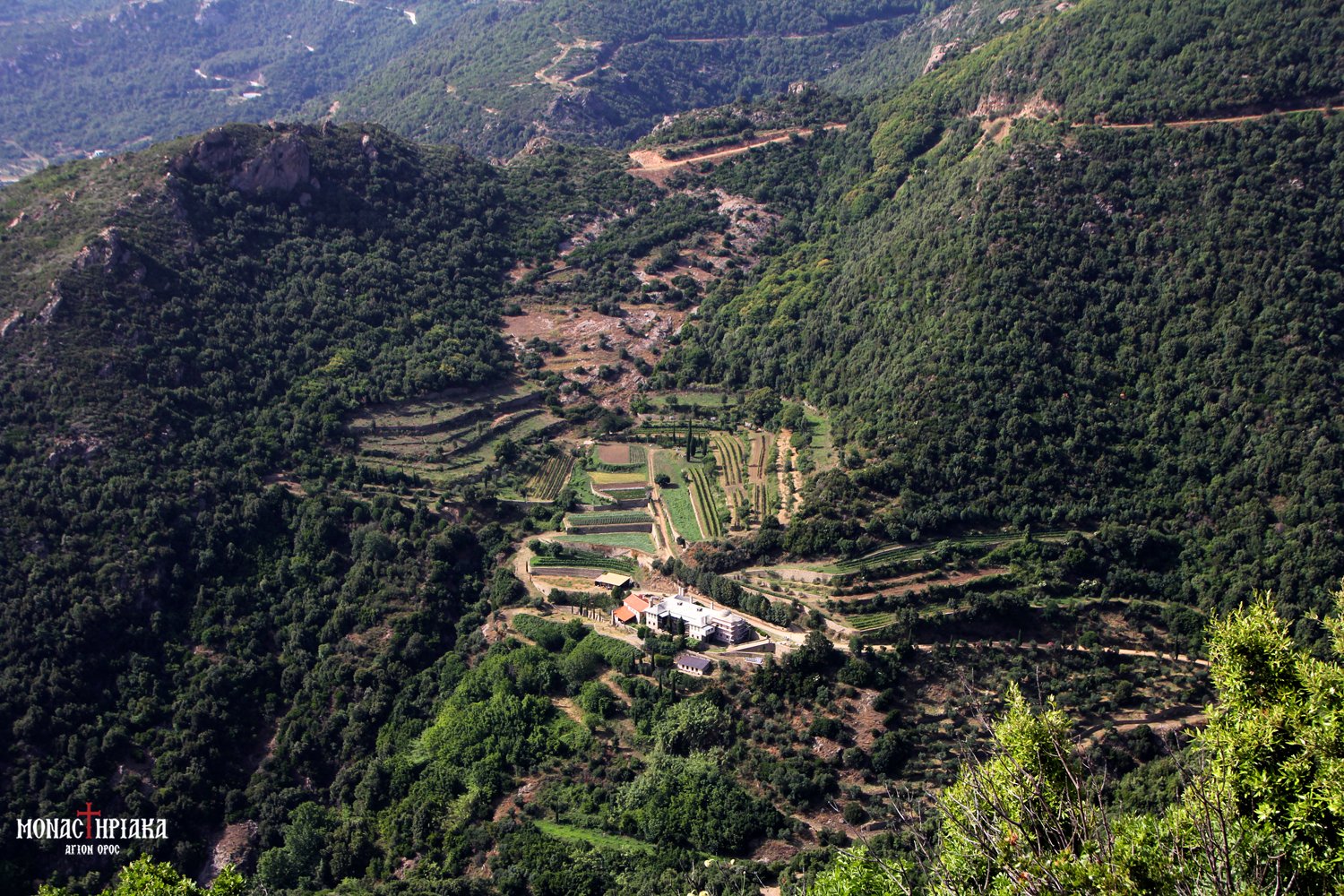
In the monastery's ‘vagenario’, known as wine press, there are two old, large barrels. One is named by Saint Simon and has a capacity of 7 tons, while the other is named Saint Mary Magdalene with a capacity of 5 tons.
In the Holy Cell of Saint Nikolaos, in the vineyard of Holy Monastery of Simonopetra, there is the unique icon of the Virgin Mary "Votryodoros". In this depiction, Theotokos holds Jesus Christ on the one hand and a bunch of grapes on the other hand.
![]()
Wines from the Glebe of Donta of the Holy Monastery of Simonos Petra
In the monastery's winery, located in the Glebe of Saint Nicholas, known as 'Dontas', red, rosé, white wines, as well as Nama, are produced.
Dontas Glebe Red Wine of the Simonopetra Monastery
The Red Wine of the Holy Monastery of Simonopetra is cultivated organically in the monastery's vineyard and is produced from the varieties Merlot and Limnio. Characteristics of this wine are its deep red color and rich aroma of black and red fruits.
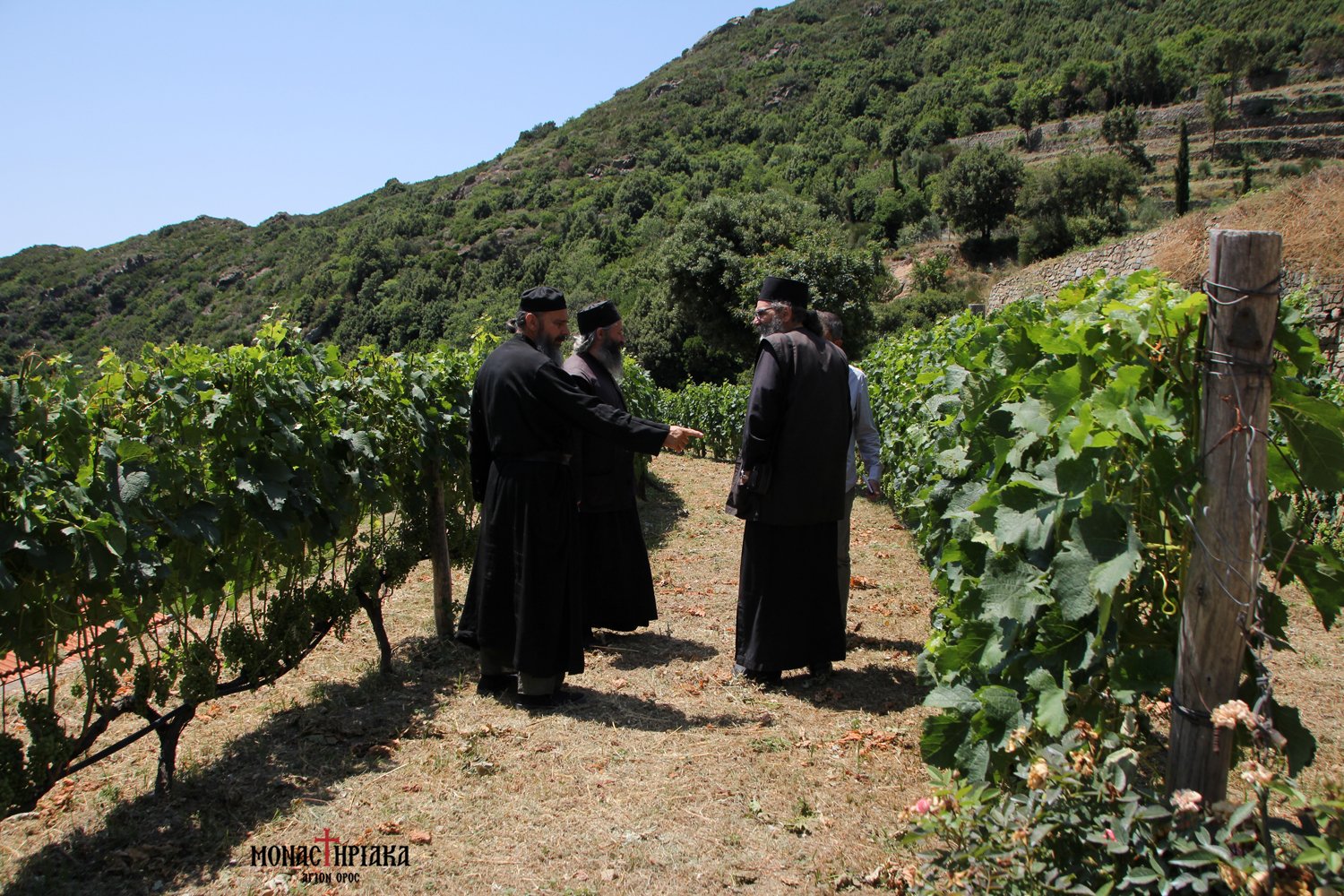
Rosé Wine of the Simonopetra Monastery
Another wine that is produced in the vineyard of Simonopetra is the Rosé Wine and consists of the varieties Merlot and Cabernet Franc. It is characterized by aromas of cherry and raspberry and its color is light ruby.
White Wine of the Simonopetra Monastery
The White Wine is derived from the Assyrtiko variety which is organically farmed in the vineyard of Saint Nicholas glebe, named ‘Dontas’. It has golden-yellow highlights and acidity from the citrus notes that it contains, imparting a fresh flavor and lasting duration.
Magnum Red Wine of the Dontas Glebe of Simonopetra Monastery
This excellent wine comes from Merlot and Limnio varieties, which are grown organically in the vineyard of the Monastery. It stands out for its deep red color and the rich aromas of black and red fruits.
Here you can find all the Wines of Dontas Glebe of Simonopetra Monastery.
Holy Great Monastery of Vatopedi
The Holy Great Monastery of Vatopedi is the second monastery in the hierarchy of the monasteries of Mount Athos and offers a wide variety of high-quality wines.
Indeed, the Cloister of Vatopedi is particularly renowned for its significant contribution to wine in the Protaton, the central administration of Mount Athos. According to records from 1393, the cloister offered approximately 625 liters of wine to the Protaton, more than double quantities of those in other monasteries.
The wine press is located in the northwestern corner of the ground floor complex of the Vatopedi Monastery. Part of its buildings is still preserved to this day and is utilized as a cellar for aging and storing bottled wine.
The wines that are produced at the Holy Great Monastery of Vatopedi
Thanks to the unique climate of the Vatopedi vineyard on the northeastern coasts of Mount Athos and the ceaseless labor of the monks, several grape varieties thrive.
The most well-known varieties include Assyrtiko, Athiri, Sauvignon Blanc, Grenache Rouge, Syrah, and Merlot.
Merlot Red Wine of the Holy Great Monastery of Vatopedi
The Merlot Red Wine originates from an exceptional blend of organically cultivated grapes. Its color is dark cherry and it is balanced in flavor and tannins.
Syrah of the Holy Great Monastery of Vatopedi
It is a wine from grapes of exceptional quality, certified by the Organic Products Control and Certification Organization. It boasts a deep ruby color, while offering a robust flavor with aromas of sage and damask.
Rosé Wine of the Holy Great Monastery of Vatopedi
The monastic Rosé Wine is derived from the Grenache Rouge and Syrah varieties. It is characterized by a clear rose color with a rich, fresh taste and aromas of red fruits.
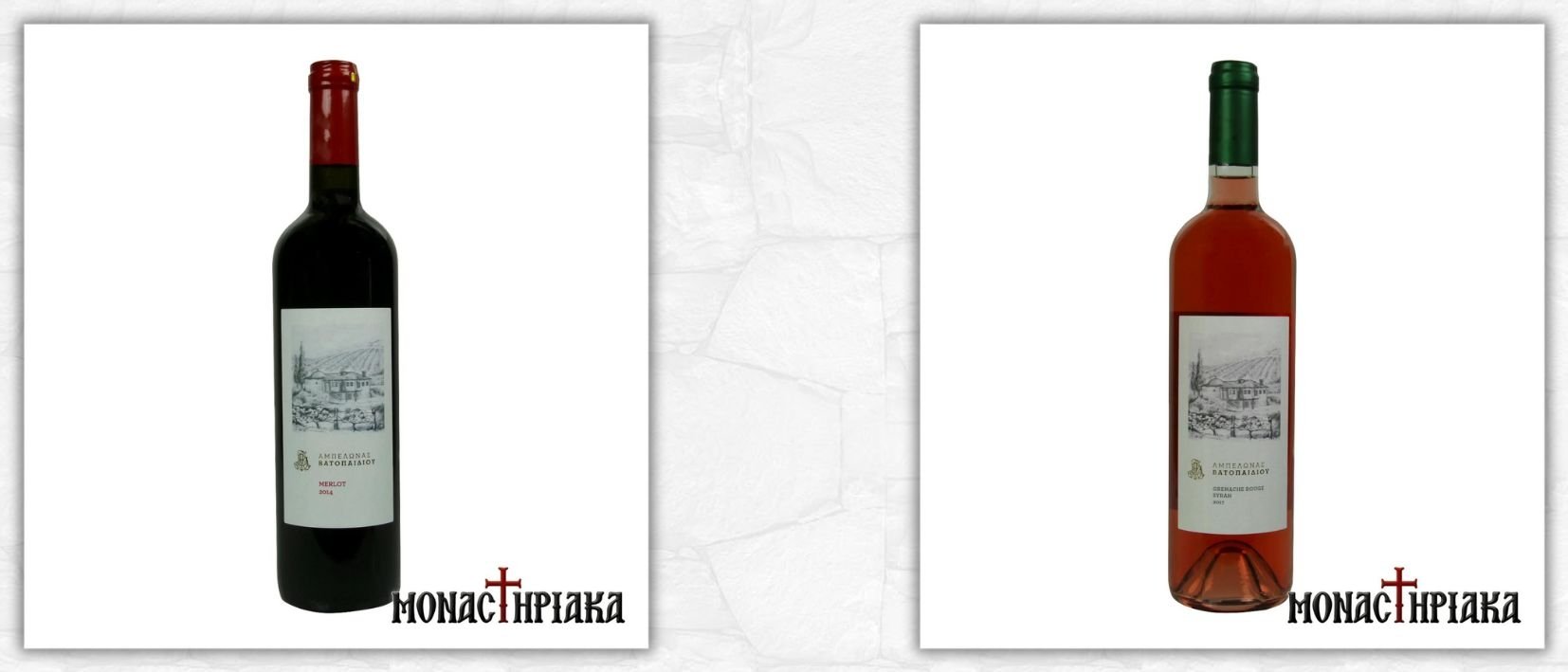
White Wine of the Holy Great Monastery of Vatopedi
The white wine of Monastery of Vatopedi is organically cultivated by varieties such as Assyrtiko, Athiri, and Sauvignon Blanc. Its taste is particularly pleasant with fruity aromas and refreshing acridity.
Holy Communion Wine - Holy Great Monastery of Vatopedi
The Red Wine is produced according to the traditional recipes left by the ancient monks of the Monastery. The fathers followed these recipes out faithfully and succeeded in creating an exceptional wine suitable for the Sacrament of the Church.
Here you can find all the Wines of the Holy Great Monastery of Vatopedi.
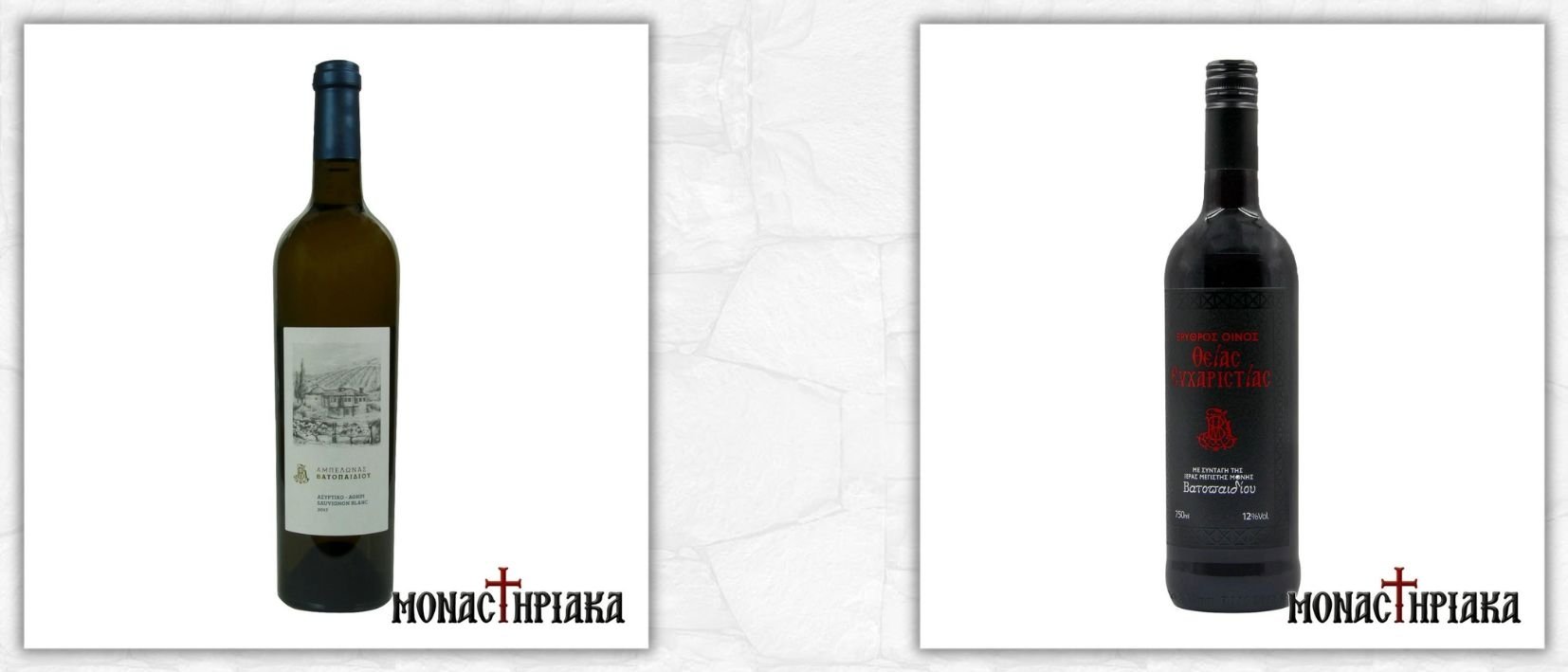
The ‘Seat’ of Mylopotamos of the Holy Monastery of Great Lavra
The Holy Monastery of Great Lavra was founded in 963 AD by Saint Athanasius the Athonite and is the first in the hierarchical ranking of monasteries.
One of the oldest glebes of the Monastery is the ‘Seat’ of Saint Eustathius. It is built on the Mylopotamos river and takes its name from some watermills that existed in a nearby area.
According to the handwritten will of Saint Athanasius, a lot of physical exertion was required to build the church of Saint Efstathios, the cells and the vineyards of the Monastery. It is said that the Monastery once produced up to 80 tons of wine.
In 1992, the blessed monk Epiphanius, hailing from Nikisiani, Kavala, returned to Mount Athos and started the restoration of the Holy Cell of Saint Eustathius.
He took care of the vineyards of Mylopotamos and cultivated various grape varieties.
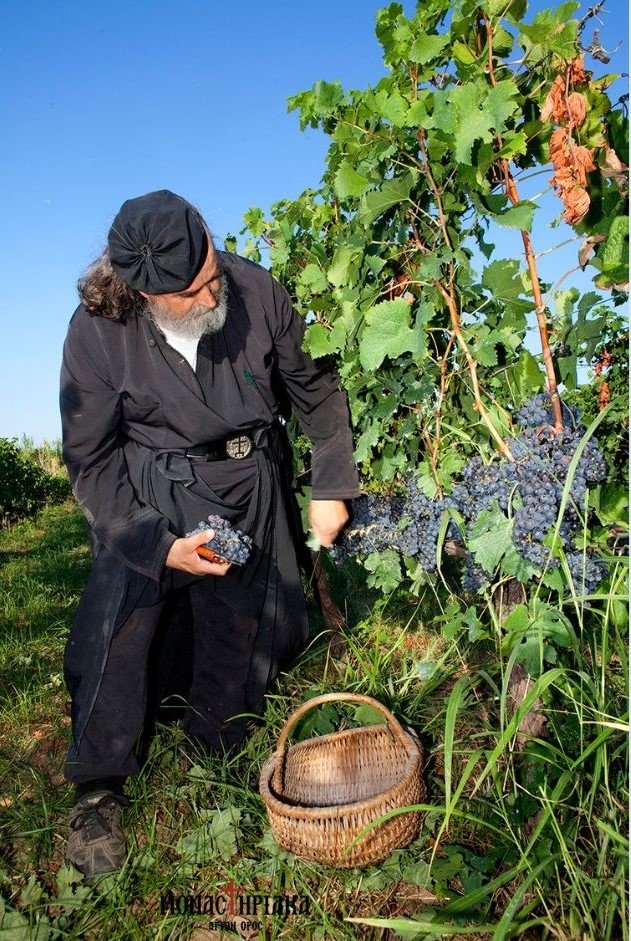
Wines from the Seat of Mylopotamos of the Holy Monastery of Great Lavra
Some of the grape varieties, thriving in the vineyards of Mylopotamos, include Muscat of Alexandria, Assyrtiko, Merlot, Limnio, Cabernet Sauvignon, and Hamburg Muscat.
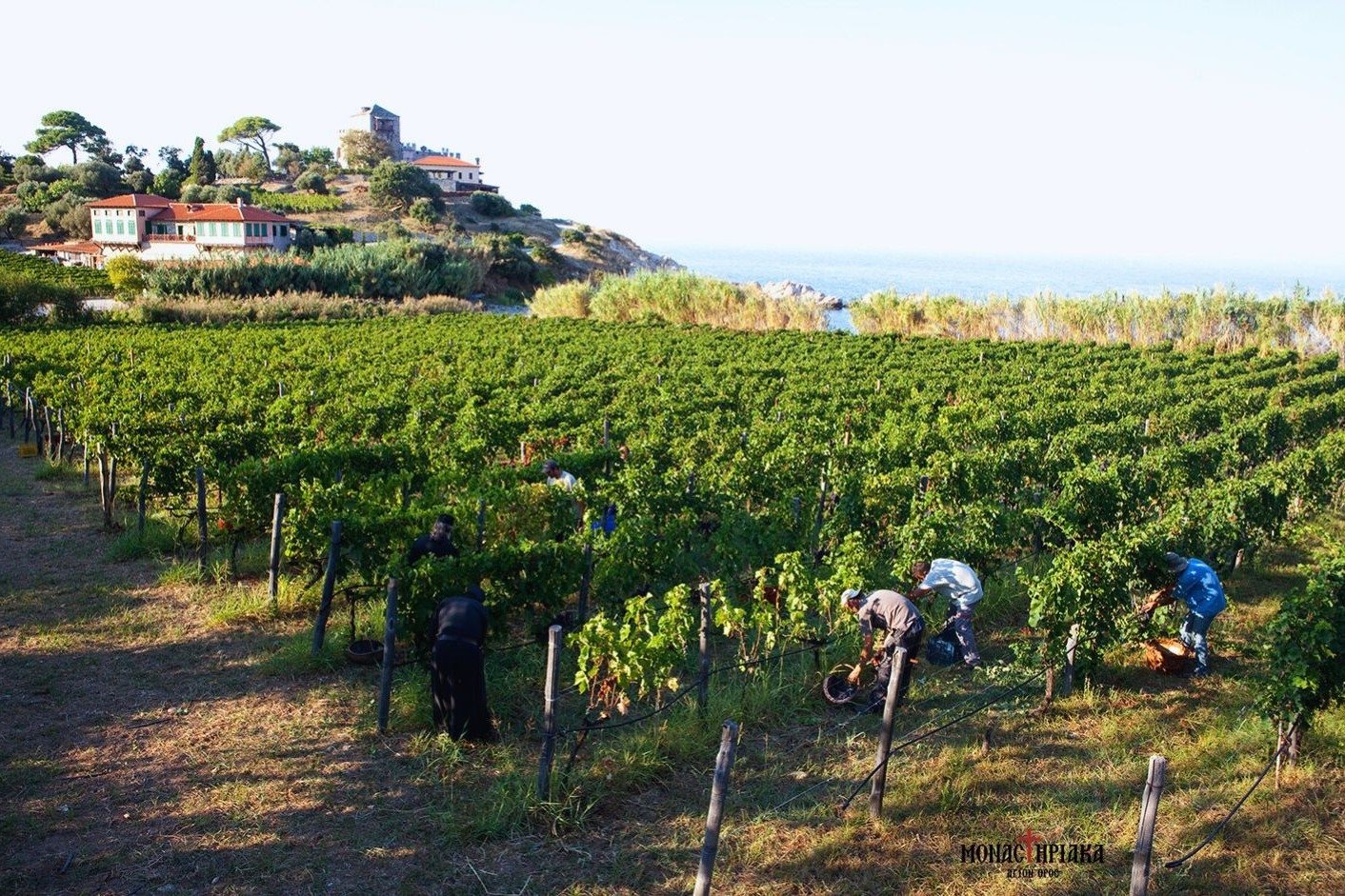
The semi-sweet red aromatic wine originates from Hamburg Muscat and is produced at the winery of Mylopotamos. Its taste features both dry and semi-dry characteristics with rich aromas.
Mylopotamos White Wine of Mount Athos
The acreage yield of Muscat of Alexandria and Roditis, from which this particular aromatic wine originates, does not exceed 1000 acres. The taste of the white wine is particularly pleasant and refreshing, while the aromas of green apple dominate throughout the wine spectrum.
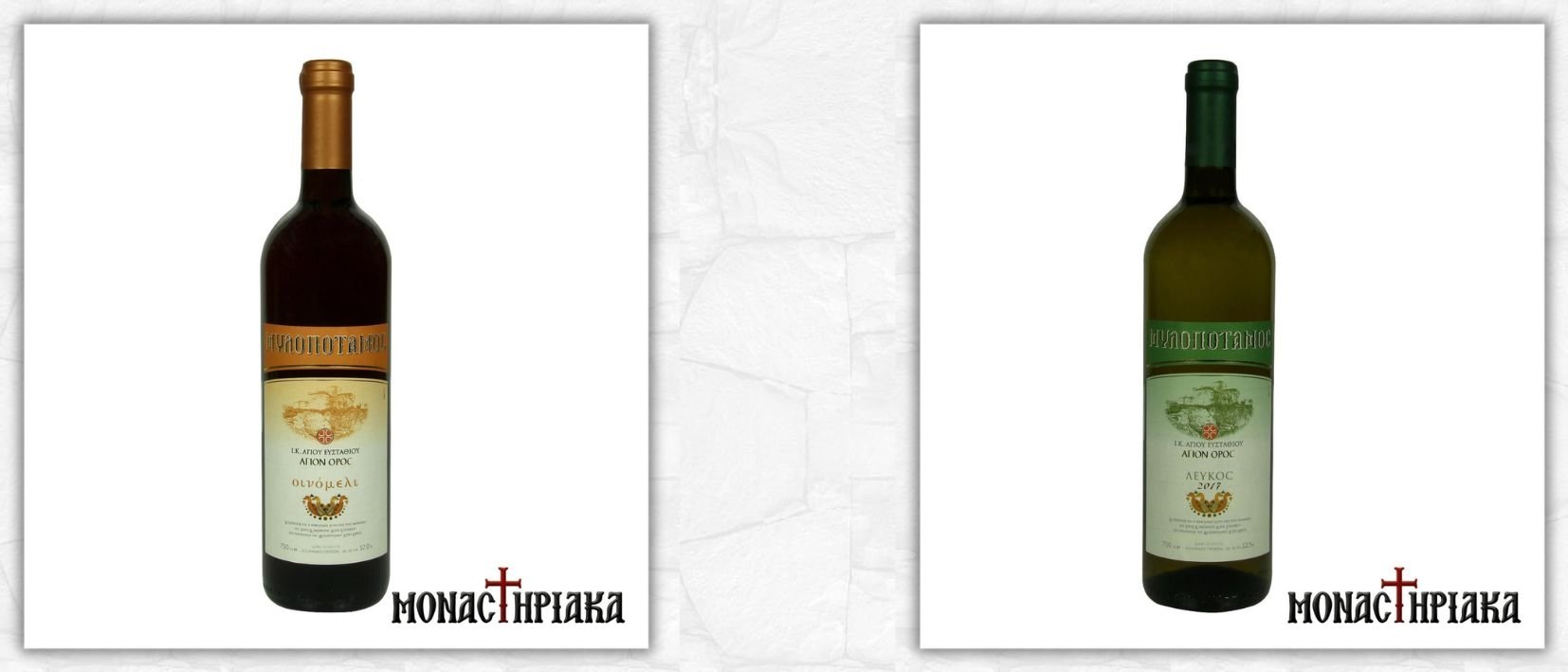
Epifanis - Red Wine of Mylopotamos
The Epifanis Wine is produced from the fifteen-year-old vines of Mylopotamos, from Cabernet Sauvignon, Limnio, and Merlot varieties. Its color is deep red and its aromas are from red fruits, plums and spices.
A richly aromatic wine with forest fruits and a deep, radiant red color is the Mylopotamos red wine. It originates from varieties such as Merlot, Limnio, and Cabernet Sauvignon.
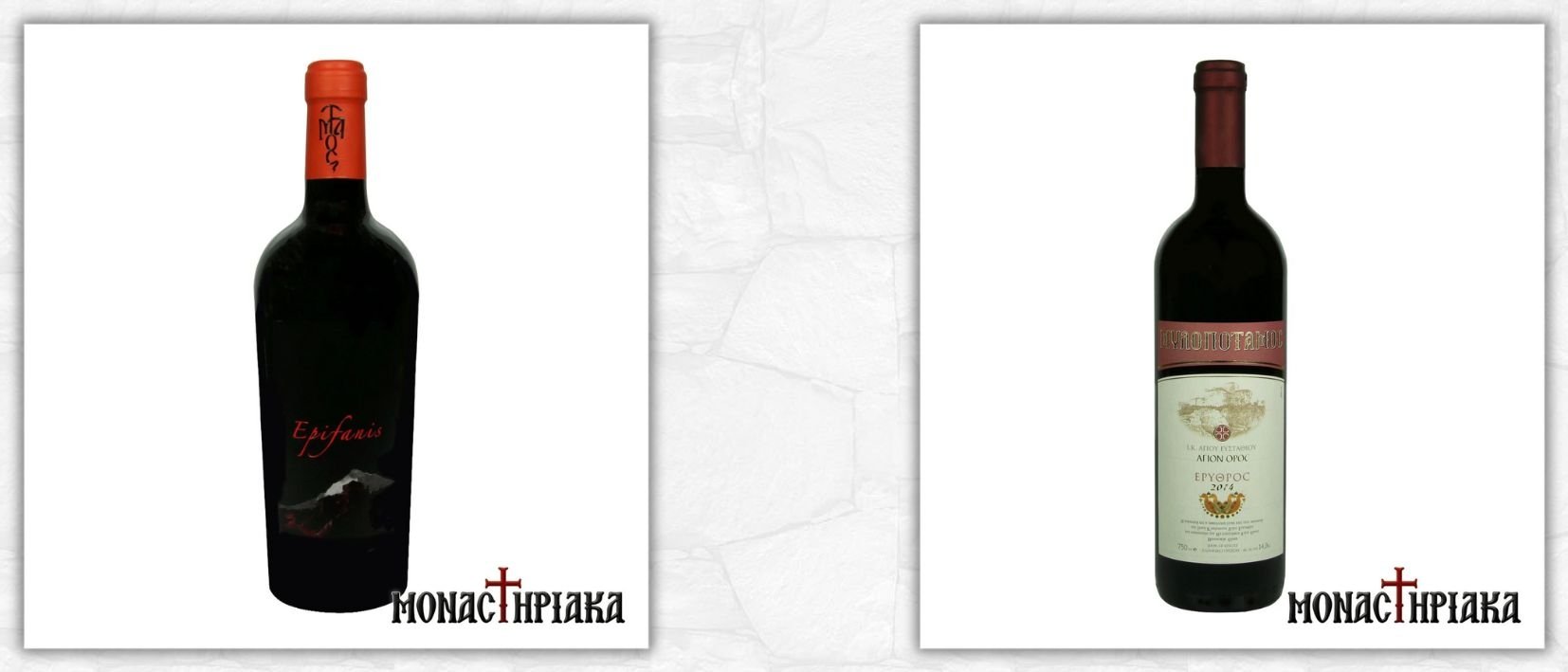
Mylopotamos Rose Wine of Mount Athos
This particular single-variety rose wine is dry and derived from Cabernet Sauvignon grapes, which impart aromatic notes of strawberry, blackberry, and black cherry.
The Nama of Mylopotamos is a sweet wine made from Muscat of Alexandria and Merlot grapes, which is used in the Mystery of the Holy Communion, as well as a dessert wine. Its aromas are dominated by rose and forest fruits, while its tannic structure is rich.
Here you can find all the Wines of Mylopotamos on Mount Athos.
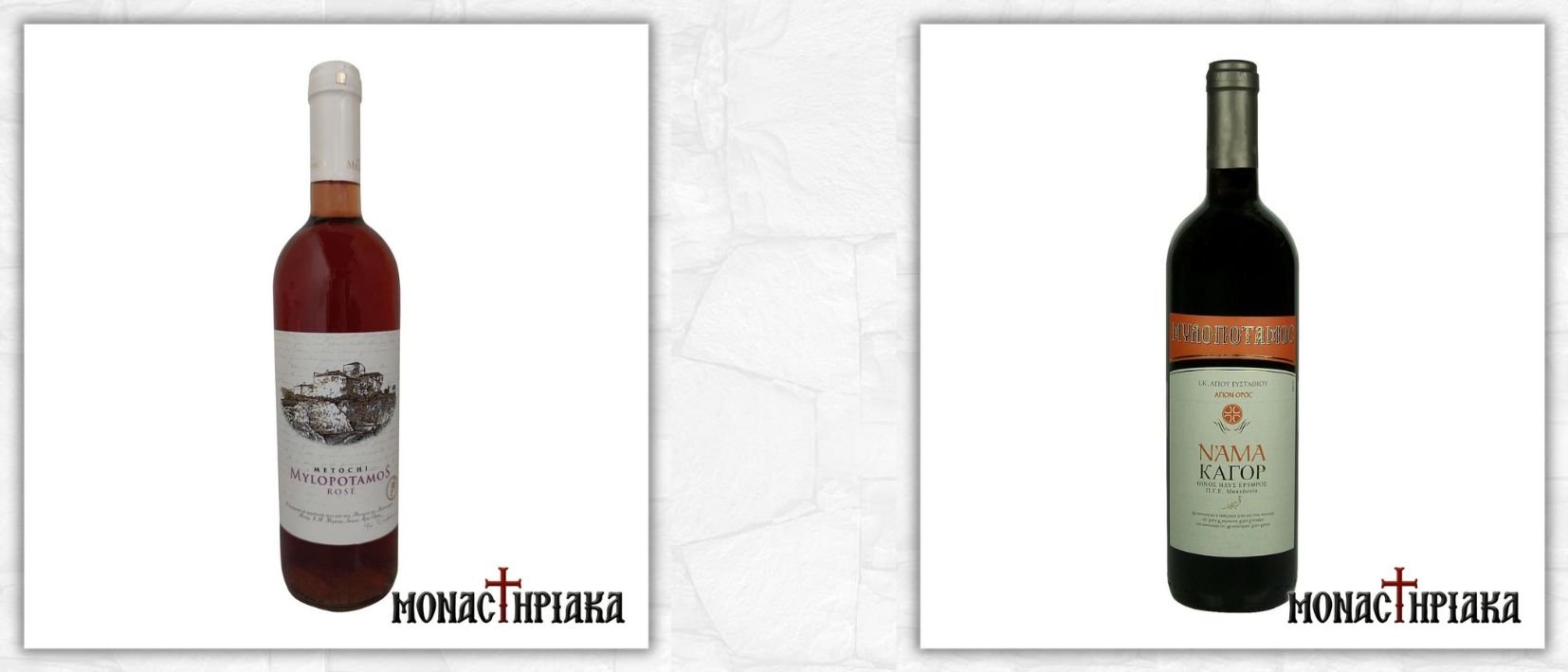
Holy Monastery of Xenophon
The Holy Monastery of Xenophon was founded by Saint Xenophon in 998 AD and is in the western coast of the Athos peninsula.
The Monastery encompasses approximately 100 acres of vineyards, where its red and white wines are produced. The vineyards are farmed with devotion and expertise by the fathers residing in the Monastery.
The wines produced at the Holy Monastery of Xenophon
The wines of the Monastery of Xenophon are produced at the dependency of Saint Philip, situated above the ravine of Giovanitsa of the Monastery of Hilandari.
Some of the grape varieties cultivated there include Cabernet Sauvignon, Grenache Rouge, and Xinomavro.
Red Wine of the Xenophon Monastery
The red wine of the Holy Monastery of Xenophon is crafted from local varieties of Mount Athos and is characterized by a deep red color with purple highlights.
White Wine of the Xenophon Monastery
A special multi-variety white wine, which has a radiant pale-yellow color with greenish highlights.
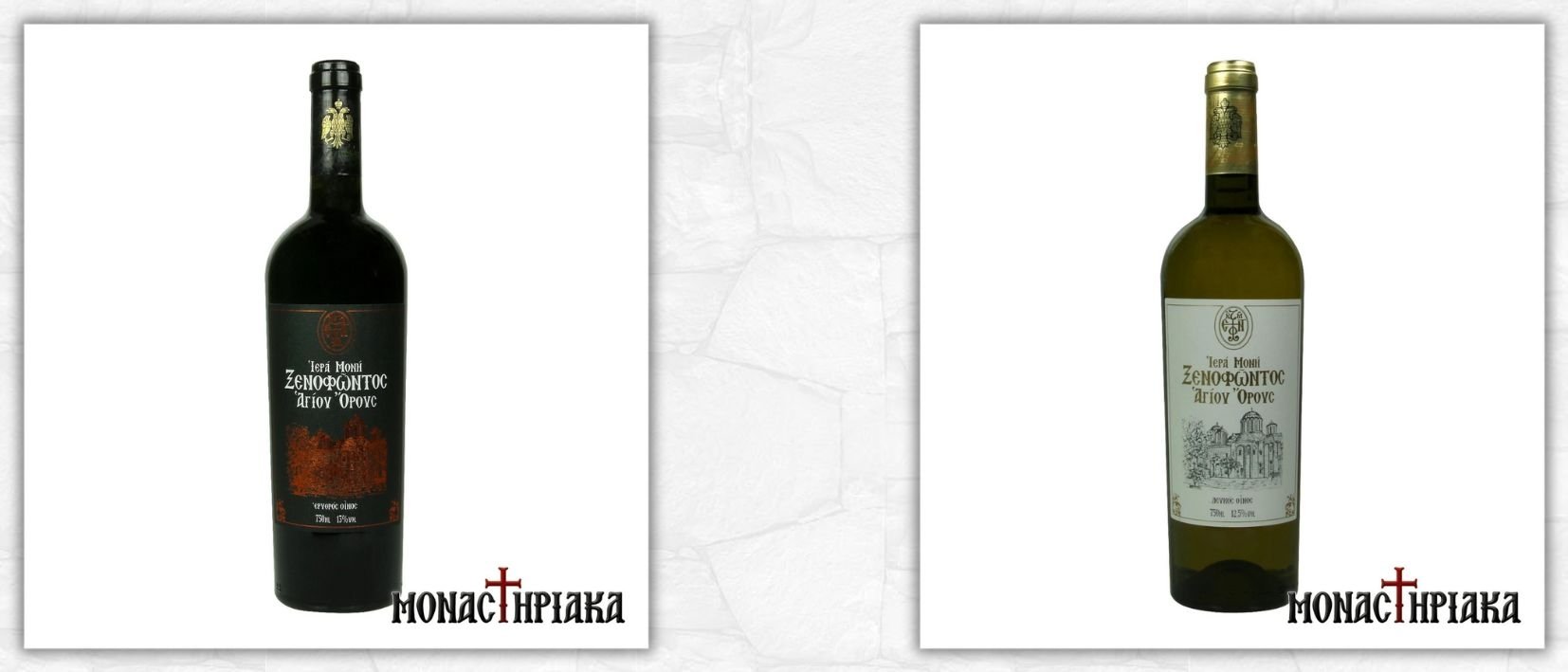
Nama Holy Monastery Xenofontos - Holy Communion Eucharist Wine
The sweet red wine of the Monastery of Xenophon, with its deep red color, is derived from Xinomavro and Grenache Rouge varieties, featuring aromatic notes of vanilla, carnation, and cinnamon. It contains natural sugars that offer a sweet, rich taste and balance.
Here you can find the Wines of the Xenophon Holy Monastery.
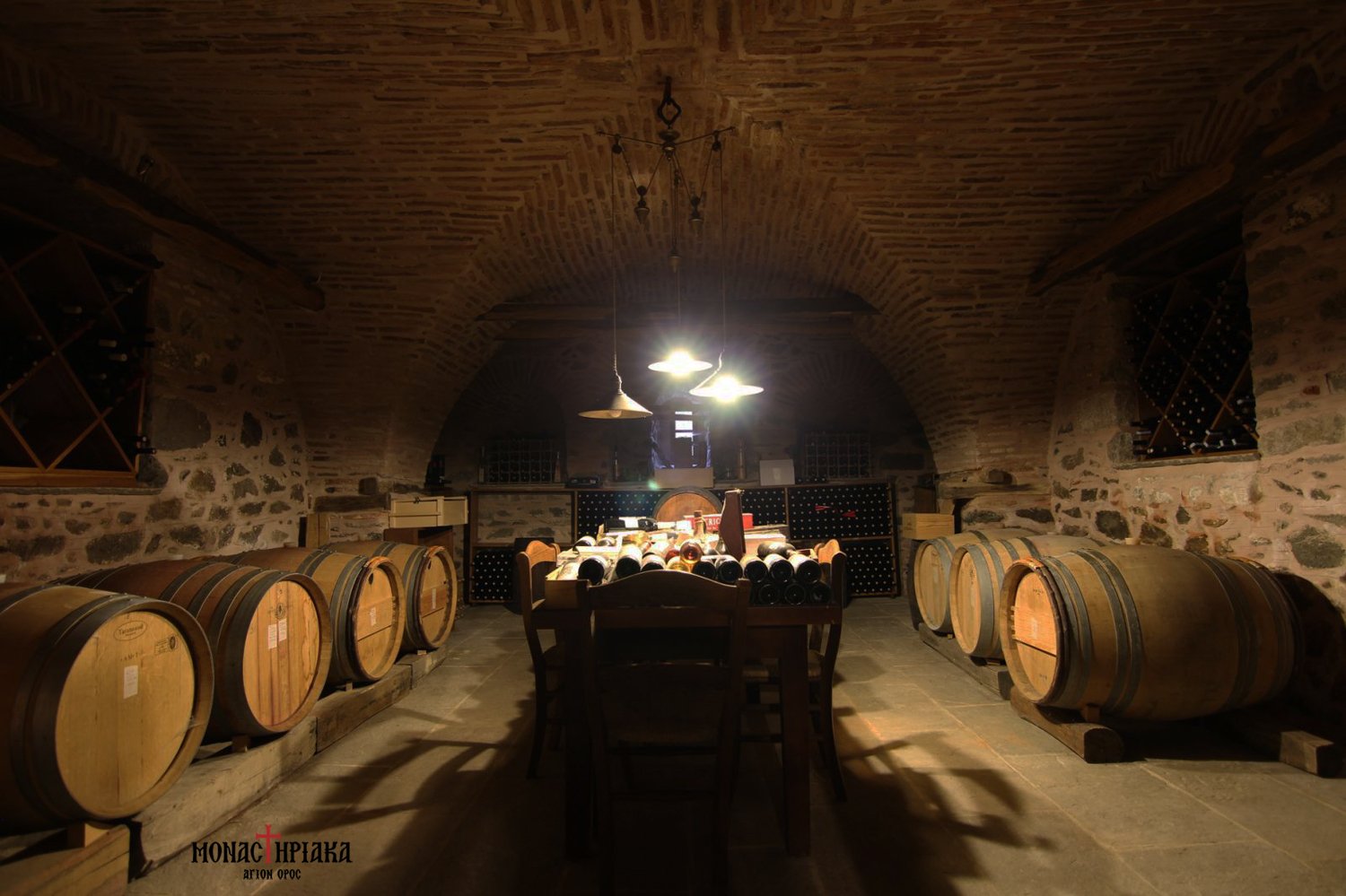
Source: "Athos and Wine" by Eleni Kefalopoulou, with contributions from Aris Fotiadis.
